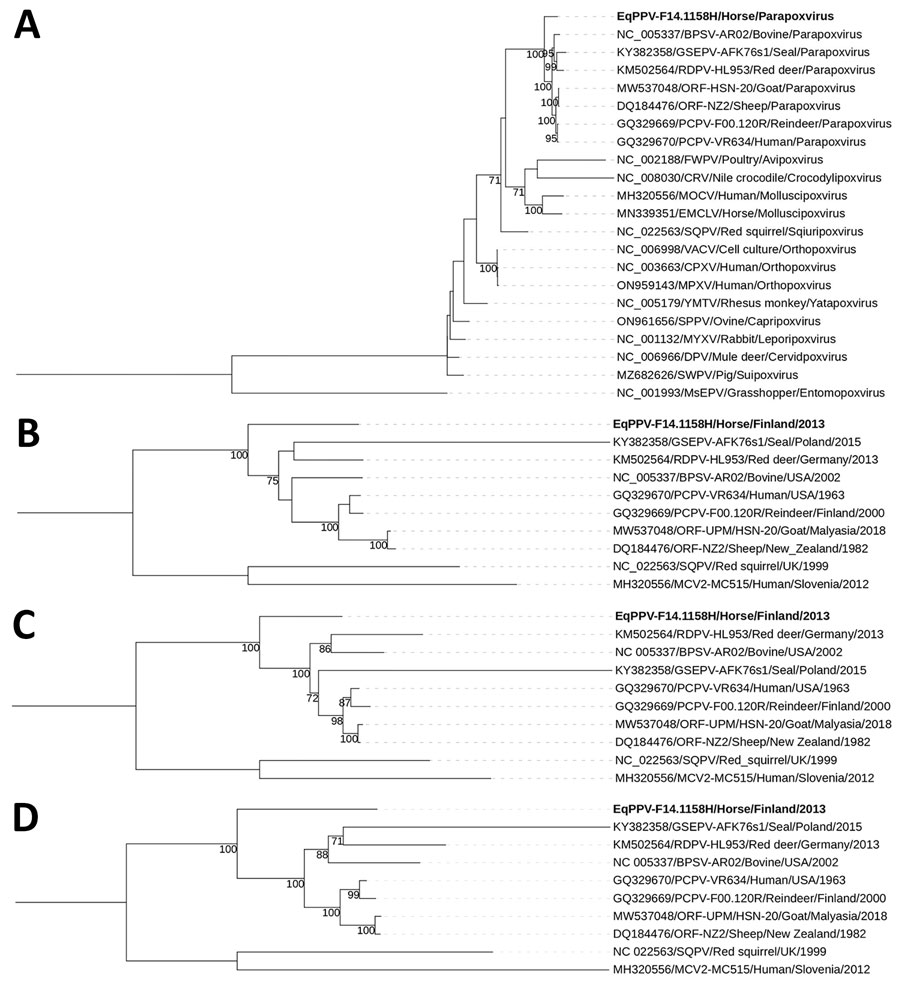Volume 29, Number 9—September 2023
Research Letter
Partial Genome Characterization of Novel Parapoxvirus in Horse, Finland
Figure

Figure. Phylogenies of PPV isolate F14.1158H from a skin lesion of an infected horse in Finland, 2013. A) Grouping of F14.1158H among all the genera of the subfamily Chordopoxvirinae in a phylogenetic tree based on amino acid sequences of the DNA polymerase (ORF025) gene. B–D) Grouping of F141158H among the genus Parapoxvirus in phylogenetic trees based on the nucleotide sequences of the early transcription factor (ORF083) (B), RNA polymerase (ORF101) (C), and topoisomerase 1 (ORF062) (D) genes. Bootstrap values >70% are shown next to the nodes. GenBank accession numbers are provided for reference sequences. MsEPV is used as an outgroup in panel A and SQPV and MOCV in panels B–D. Findings indicate that F14.1158H represents a novel PPV, designated EqPPV. CPXV, cowpox virus; CRV, crocodilepox virus; DPV, deerpox virus; EMCLV, equine molluscum contagiosum-like virus; EqPPV, equine PPV; FWPV, fowlpox virus; MOCV, molluscum contagiosum virus; MPXV, monkeypox virus; MsEPV, melanoplus sanguinipes entomopoxvirus; MYXV, myxoma virus; ORF, open reading frame; PPV, parapoxvirus; SPPV, sheeppox virus; SQPV, squirrelpox virus; SWPV, swinepox virus; VACV, vaccinia virus; YMTV, yaba monkey tumor virus.